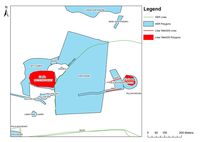
Figure 35: Example of relative transcription detail of WebGIS and HER, centred upon Brimpsfield Castle
Andrew Keen argues a threat lies in the 'Web 2.0 generation' taking web-based information sources as 'gospel' (2007, 93). The value of appropriate evaluation of information sources should be self-evident in all contexts. However, in heritage contexts the available information is often only the 'official̵ record, providing little alternative perspectives. The danger of taking information at face value is omnipresent in official and crowdsourced/citizen science-derived data. Archaeological projects face the same challenges as other disciplines regarding cartographic output and bias, and consequently the move towards greater plurality represented by the project incorporating viewpoints from outside the archaeological profession aids in diffusing claims of privilege or empowerment of one group over another. Perhaps if professionalism is to represent a virtue, then we have to be willing to accept the validity of a voice other than our own. Arguably, the greater danger may lie in the creation of recording systems that lack transparency and are allowed to go unchallenged. In an archaeological context, this could be tackled through ground truthing and/or error checking, similar to those adopted during this project. Regardless, expertise is developed through experience and the refusal or lack of action to aid the public to develop proficiency in interpreting data based on the impression that they lack expertise is an unproductive cycle. It is important to recognise that expertise develops through time, and therefore nascent projects aimed at developing expertise in the public domain may make a wider and significant contribution progressively as increased levels of engagement are achieved.
Crucially, the democratisation and emancipation of archaeological knowledge and expertise will undoubtedly generate tensions at the epistemological, political and institutional level. To deflect these tensions some codification or standardisation may be necessary to ensure dialogue between expert and non-expert groups, alongside mutual verification procedures (Nowotny 2003, 154). Creating a nomenclature that transcends expert and non-expert domains could be problematic. Lee argues for the creation of an ontology - a document that formalises individual concepts within a field of knowledge, while acknowledging that experience-based knowledge should be valued and some personalisation of ontologies is necessary (2012, 37-8). The required degree of personalisation and codification will only be decided through action and continued development and reflection on praxis of expert and non-expert collaboration.
Throughout the process of negotiation between expert and non-expert spheres, the ability to create alternative maps should not be undervalued. The value lies not only in creating maps that can be integrated into the official HER record but also in creating cartographic outputs that represent alternative viewpoints, and correctly re-emphasise the subjectivity of map creation to public and professional alike and allow multiple viewpoints to be expressed, bringing projects closer to the dominant paradigms of current archaeological theory. As indicated during the discussion of results, significant differences exist in the number and range of features transcribed when comparing WebGIS volunteered data to the 'official' data provided by the HER, illustrated by Figure 35, which depicts the known archaeological features in the area of Brimpsfield Castle.

Figure 35: Example of relative transcription detail of WebGIS and HER, centred upon Brimpsfield Castle
The disparity of identified features could result from the additional sources of data available to the HER, for example, desk-based assessments and geophysical surveys that allow for a more accurate and nuanced interpretation, as well as the comparative skillsets of the user groups in question. However, variability of skill and knowledge within any expert or non-expert group is discernible; for example professionals dedicated to the production of important cartographic datasets such as Ordnance Survey's MasterMap still manifest discrepancies (Kitchin et al. 2013). A similar variability is conceivable in HER departments and volunteer groups, but in the case of MasterMap the input of a plethora of users of varying skill is compensated by standards and procedures derived from cartographic practices established over generations (Kitchin et al. 2013). Incorporating an increased level of standardisation for volunteer projects may improve the consistency of results but the balance between the freedom to produce maps for volunteers for their purposes and maps to bolster official records must be sought.
Internet Archaeology is an open access journal based in the Department of Archaeology, University of York. Except where otherwise noted, content from this work may be used under the terms of the Creative Commons Attribution 3.0 (CC BY) Unported licence, which permits unrestricted use, distribution, and reproduction in any medium, provided that attribution to the author(s), the title of the work, the Internet Archaeology journal and the relevant URL/DOI are given.
Terms and Conditions | Legal Statements | Privacy Policy | Cookies Policy | Citing Internet Archaeology
Internet Archaeology content is preserved for the long term with the Archaeology Data Service. Help sustain and support open access publication by donating to our Open Access Archaeology Fund.
File last updated: Wed Oct 23 2013